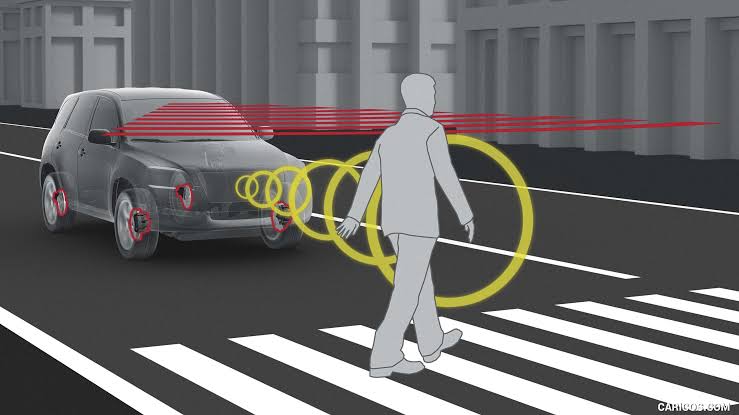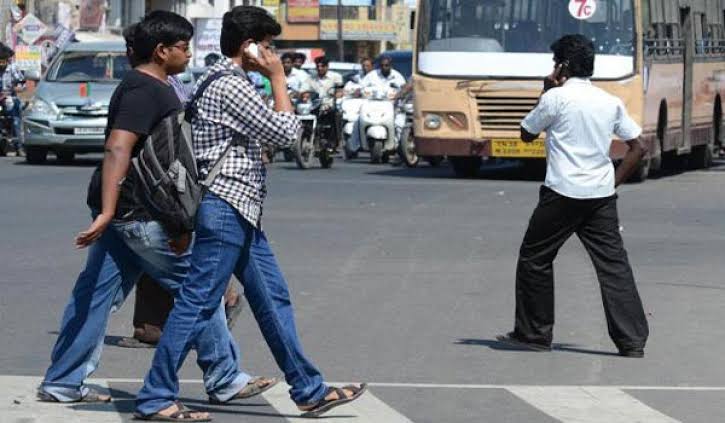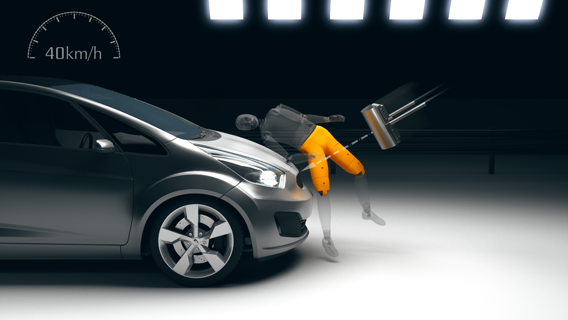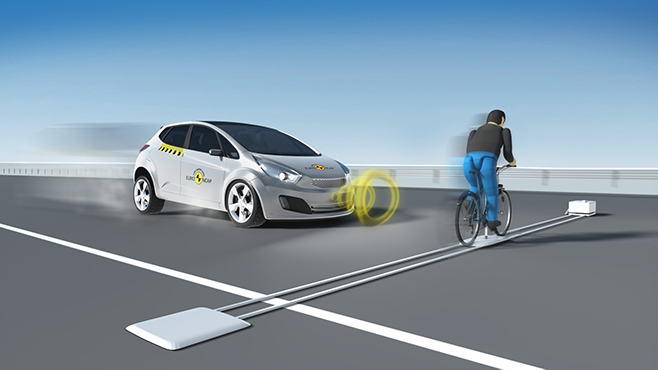Safety, a parameter which was long overseen in India when it came to buying cars, has now become an important parameter for many car buyers nowadays. Carmakers like Tata Motors, MG Motor and many more are ensuring safety with getting a 5-star rating for multiple cars they offer. Occupant safety is taken care of with features such as airbags, structural strength and so on. But another safety aspect is the vulnerable road users such as a pedestrian. What is pedestrian safety and protection? Why do we need norms for this? What all norms are there in India? Where does India stand in pedestrian safety globally? Let’s dwell deep into these questions and try to solve this puzzle.
What is pedestrian safety and protection?

A pedestrian can be defined as a vulnerable road user that is at risk when it comes to roads. Thus the safety of such being is essential. The pedestrian safety and protection norms are aimed to do so. It will ensure that the new cars meet a minimum requirement of safety for the pedestrians. It’s one of the phases of Bharat New Safety Vehicle Assessment Program (BNVSAP).
What causes pedestrian accidents?

There are many factors that can lead to a pedestrian getting involved in an accident. Most of the times, the driver is at fault. Few of the moments when the driver is at fault are:
- Distracted Driving: Driver is busy talking to someone on the phone, or maybe even talking to the passenger. Or could be texting, eating or drinking. This all can lead to the driver not noticing the pedestrian who has the right to way and can lead to an accident.
- Speeding: It is not just a violation of traffic laws but also a threat to the pedestrian on the roads. The result can be life-threatening injuries to the person or can even lead to death.
- Intoxicated driving: There have been cases when the driver was not in his complete senses while driving and the pedestrians were at the major loss end. Thus alcohol consumption is not only a violation of traffic rules but another threat to the pedestrians.
- Poor reaction time: Many a time, drivers are able to see the pedestrian but are not able to react accordingly due to poor reaction timing. This leads to devastating results.
- Reverse parking or Backing up: Drivers are usually not able to see who is behind the car, especially kids who are not visible. This usually happens at the parking lots.
Thus it is necessary to equip the cars with such sensors and systems which can alert the driver or at sometimes take the possible actions to avoid crashing into pedestrians.
What do cars have for pedestrian safety across the world?
Cars across the world come equipped with a variety of safety features ranging from the ones which alert the driver to those which automatically prevent the collisions. Let’s have a look at the features cars have all around the world.
-
Attention Assist

Attention Assist | Pedestrian Safety and Protection Some major accidents have happened involving the pedestrians only because the driver fell asleep. This system will detect the motion of the eyes and sense whether the driver is awake or not. If not, it will alert the driver. It also advises the driver to take breaks regularly so that he is attentive enough while driving.
-
Autonomous Emergency Braking (AEB)

Autonomous Emergency Braking System | Pedestrian Safety and Protection Major accidents occur due to late-breaking or insufficient braking force this system. AEB is meant to prevent this. According to Euro NCAP: Autonomous is the system that acts independently of the driver in order to avoid or mitigate the accident; the Emergency system will act in a critical situation and Braking system will try to avoid the accident by applying brakes. The advanced version of the system was introduced by BMW in the year 2014 which was aimed for the safety of pedestrians.
-
Electronic Stability Control (ESC) or Electronic Stability Program (ESP)

Electronic Stability Program | Pedestrian Safety and Protection This system will improve the stability of the vehicle by detecting and reducing the loss of traction. The ESP will apply the brakes to the wheel which is skidding or losing traction thus preventing oversteer.
-
Speed Alert System
Speeding has been a cause of many accidents which many a time includes pedestrians too. This system helps the driver to keep the speed in the limits of the road.
But will all the new Indian cars get these features too?
What new safety features you can expect in your car?
The Indian cars were lacking basic safety features such as front airbags and ABS. But with the implementation of the first phase of BNVSAP, it was mandatory for the cars to have 2 front airbags and ABS as standard. For pedestrian safety, all the manufacturers will have to add pedestrian safety software from October 2020. Peripheral sensors will assist the software which will sense any impact and actuate the airbag control unit. It will also raise the hood of the car in order to provide a safe layer. This will reduce the impact on the pedestrian involved.
Moreover, new vehicles will get safety features like Electronic Stability Control (ESC) and Autonomous Emergency Braking (AEB) by 2022. The consumer preferences have been shifting more towards the safety instead of brand and cost.
Suggested read: How the Consumer Trend For Cars Is Changing in India
What is the major hurdle in implementation?
There is no excuse that should be entertained when safety is concerned. The major issue is the increase in cost. Car manufacturers will have to increase the overall cost of the vehicle if all the safety features are to be incorporated. Thus, you should be ready to spend more from your pockets. Or reframing it, you should be ready to pay a small price for better safety.
How will the vehicles be tested for pedestrian safety?
Globally, various NCAPs are present that carry on the pedestrian safety tests on new vehicles and rate them accordingly. For eg. the Euro NCAP has five parameters for pedestrian safety test for the new vehicles:
-
Head Impact

Head Impact Test | Euro NCAP This test is carried out for a vehicle speed of 40 km/h. To have an estimate of the potential head injury in the fateful event of a vehicle striking an adult or a child, a head form impactor is used in a series of impact tests and the impact sites are then assessed for and rated accordingly.
This test will give essential information about the deformation clearance, energy-absorbing structures and deployable protection systems such as pop-up bonnets and external airbags in a new vehicle. -
Upper Leg Impact

Upper leg Impact | Euro NCAP The facility carries out the test at the vehicle speed of 40 km/h. An adult upper leg form impactor is used in a series of impact tests and then the impact sites are assessed. The protection is then rated as good, adequate, marginal, weak or poor. The test procedure allows to check the energy-absorbing capacity of the structures of a vehicle and also check whether the geometry of the vehicle allows mitigation of injuries.
-
Lower Leg Impact

Lower Leg Impact | Euro NCAP Euro NCAP carries the test at the same speed standard as the above ones. It uses an adult leg impactor and a series of tests are carried out. Impact sites are then assessed and the protection rating is offered.
-
AEB Pedestrian

AEB Pedestrian | Euro NCAP For this test, the NCAP uses a specially-designed pedestrian form which has articulated limbs to replicate the walking motion of a human. Cars are assessed on the basis of how forgiving the front-end design is in case of impact. AEB pedestrian tech may not be able to completely avoid a collision in some cases. The tests are done in the day as well as night to ensure vulnerable road users are protected all the time.
-
AEB Cyclist

AEB Cyclist | Euro NCAP For this test, Euro NCAP uses a specially designed cyclist form which will replicate the actual cyclist on the road. Euro NCAP offers the highest rating if the collision is completely avoided. The vehicle is also awarded if the speed is reduced as any reduction in speed of impact can significantly reduce the injury to the vulnerable user.
India will also be getting its own safety test named BNVSAP. Soon, our country roads will get safer. But you cannot clap using a single hand. It is our duty also to check whether the cars we purchase have a good pedestrian score or not. Are the cars safe for anyone at risk, be it the occupants or the vulnerable road users? Tata Motors and Mahindra have worked significantly towards making their cars safer. Other manufacturers such as Maruti Suzuki direly need to ensure safer vehicles too. What’s your take on the pedestrian safety norms? Is there anything you want to know? Let us know in the comments section.





